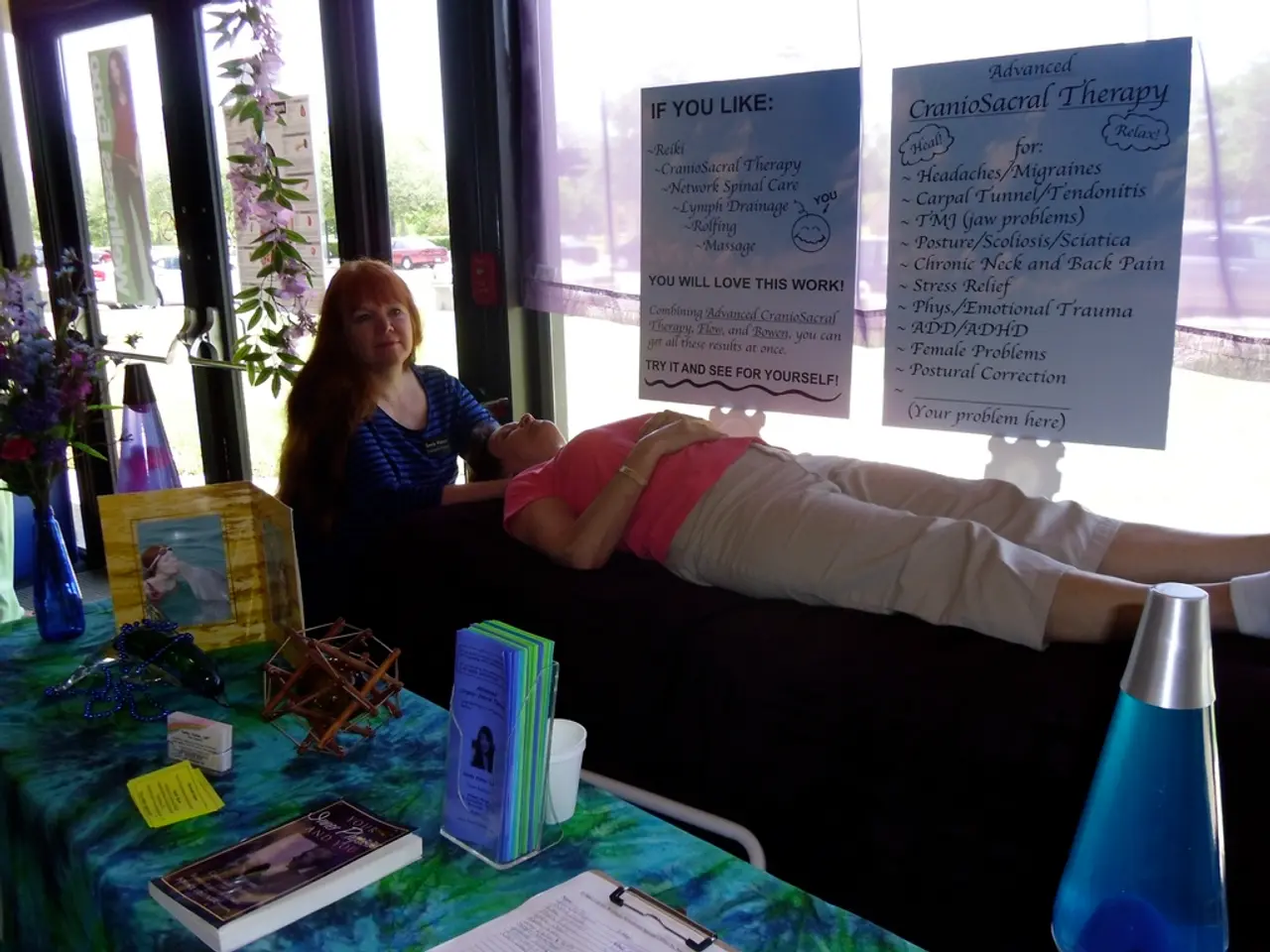Recognizing Cyclothymia: Understanding Symptoms, Diagnosis, and Treatment Options
Cyclothymic disorder, a mild form of bipolar disorder, is characterised by emotional highs and lows. This condition, which can be challenging to manage, often requires a combination of psychotherapy and, when necessary, psychiatric medications.
## Psychotherapy
Psychotherapy serves as a crucial foundation in the treatment of cyclothymic disorder, often acting as the first-line approach. Various types of psychotherapy have proven beneficial for managing this condition, such as:
- **Cognitive Behavioral Therapy (CBT):** CBT helps individuals identify distorted thought patterns and manage emotional cycles more effectively, enabling them to respond to situations in a healthier manner [1]. - **Interpersonal Therapy:** This form of therapy focuses on improving relationships and can be particularly beneficial for managing social interactions [1]. - **Mindfulness-Based Therapy:** Mindfulness-based therapy assists in developing better coping strategies and managing stress [1]. - **Emotion Regulation Training:** This therapy teaches skills to manage mood changes, providing individuals with the tools they need to better navigate their emotional landscape [1].
## Psychiatric Medications
In cases where mood fluctuations are severe, psychiatric medications may be prescribed in addition to therapy.
- **Mood Stabilizers:** Mood stabilizers, such as Lithium and Lamotrigine, are often used to reduce the intensity and frequency of mood swings [1][5]. Lithium is known for its ability to stabilise mood, while Lamotrigine is effective for managing mood swings and can help prevent manic episodes. - **Antidepressants:** Antidepressants can be used cautiously, as they may trigger hypomanic symptoms if not balanced with a mood stabilizer [1][2].
## Additional Recommendations
- **Consistent Follow-Up:** Regular consultations with healthcare providers are essential for adjusting treatment plans as needed [1]. - **Stable Daily Routine:** Maintaining a consistent sleep schedule, eating well, exercising, and engaging in stress-reducing activities can help minimise mood instability [1]. Interpersonal and social rhythm therapy (IPSRT) focuses on stabilising daily rhythms like sleep and mealtime, and correcting or managing lifestyle issues to treat cyclothymic disorder.
It is important to note that there is no one cause of cyclothymia, as multiple factors are involved, including genetics and one's environment. Mental health professionals and researchers agree that these factors play a significant role in the development of cyclothymia [3][4].
Cyclothymic disorder can be triggered by several factors, including genetics, environment, and stress [6]. Common symptoms of cyclothymic disorder include exaggerated feelings of happiness and euphoria, racing thoughts, irritability, hyperactivity, and difficulty sleeping, among others [7]. Depressive symptoms may include feelings of sadness or hopelessness, weight fluctuation, and suicidal thoughts or ideation [7].
Alcohol abuse is common in people with cyclothymic disorder, as it can worsen mood swings and interfere with sleep [8]. Having a consistent medication regimen is also important for managing the irregular and abrupt symptoms of cyclothymic disorder [9].
To be diagnosed with cyclothymia, an individual must meet a specific set of criteria, including multiple periods of hypomania and depression, as well as periods of stability [10]. Cyclothymia is a treatable disorder, and different forms of therapy, such as cognitive behavioral therapy (CBT), have proven to help those who suffer with it [2].
[1] National Institute of Mental Health. (2016). Cyclothymic Disorder. Retrieved from
- Science continues to explore various therapies and treatments for managing mental health conditions such as chronic disorders, like cyclothymic disorder.
- In addition to psychotherapy, nutritional aspects like a balanced diet and regular exercise play essential roles in maintaining cardiovascular health and overall wellness, which can support mental health.
- Hearing is a crucial aspect of our overall health, and research suggests a possible connection between mental health conditions and ear-related issues.
- Digestive health can also significantly impact our mental well-being, as numerous autoimmune disorders like Crohn's disease and ulcerative colitis have been linked to mental health issues.
- Neurological disorders, such as multiple sclerosis and Parkinson's disease, can cause symptoms like emotional imbalance and cognitive impairment that may require CBD oil as part of their treatments.
- Similarly, skin conditions like eczema and psoriasis, which affect a significant portion of the population, can lead to negative psychological impact and are in need of further attention from health and wellness professionals.
- Respiratory conditions, such as asthma and COPD, can lead to feelings of anxiety and depression due to their unpredictable symptoms, highlighting the importance of integrating mental health support into treatment plans.
- Mental health professionals increasingly recognize the importance of addressing mental health in therapies and treatments for various chronic diseases, including cancer, heart disease, and diabetes.
- In the management of cyclothymic disorder, it's essential to involve medical professionals who specialize in neurology, dermatology, cardiology, digestive health, and respiratory conditions to provide comprehensive care, as various factors can contribute to its manifestation and persistence.




